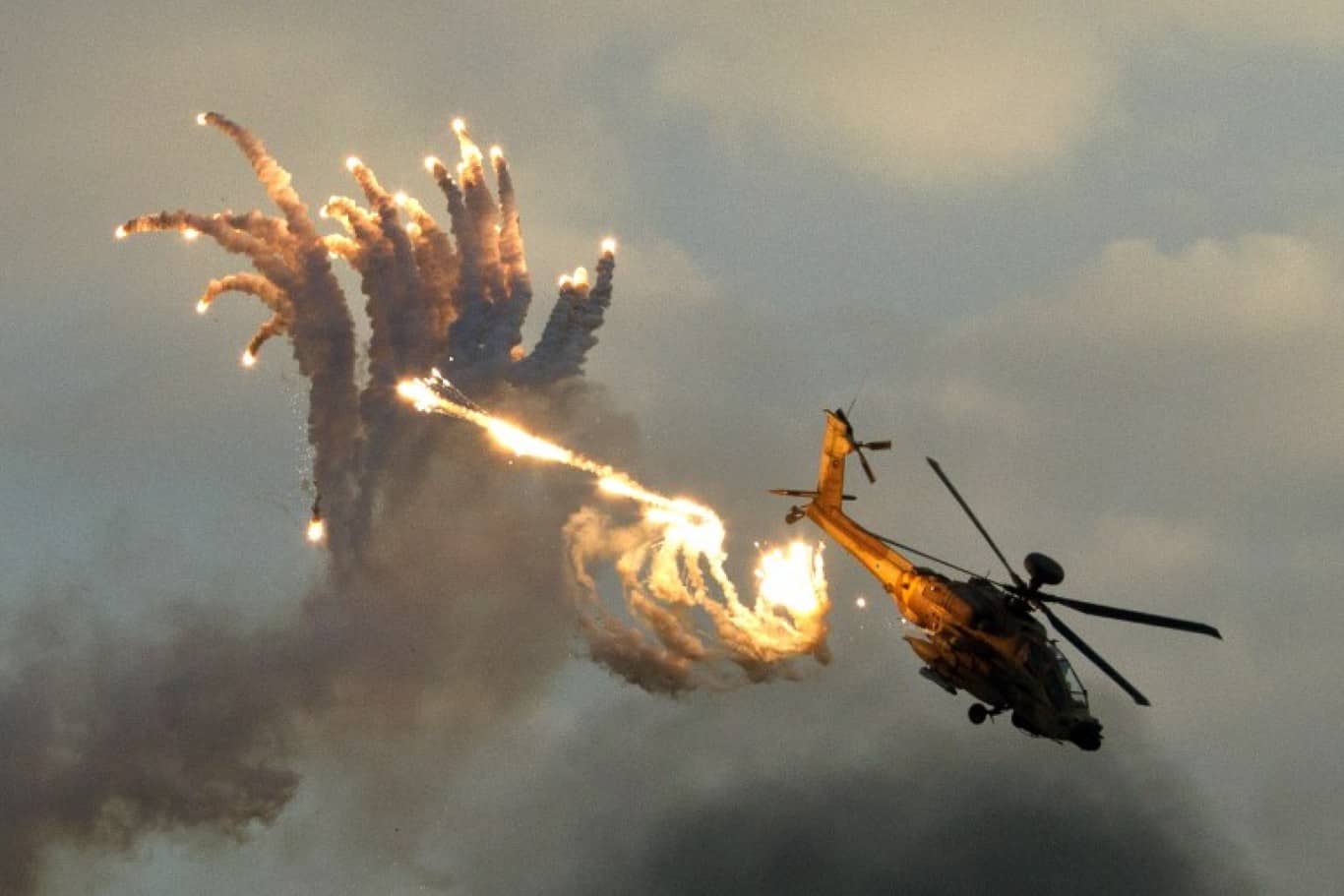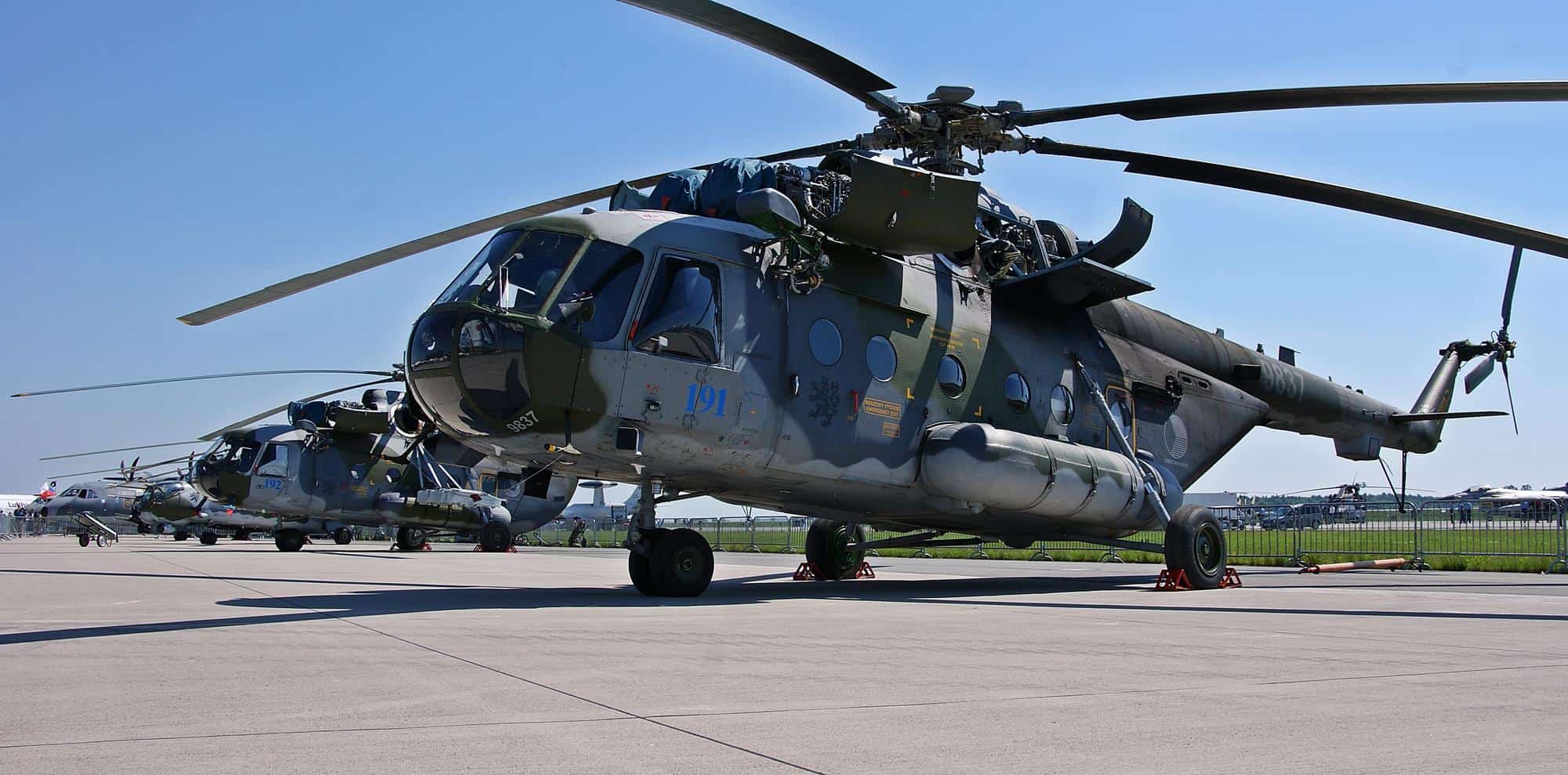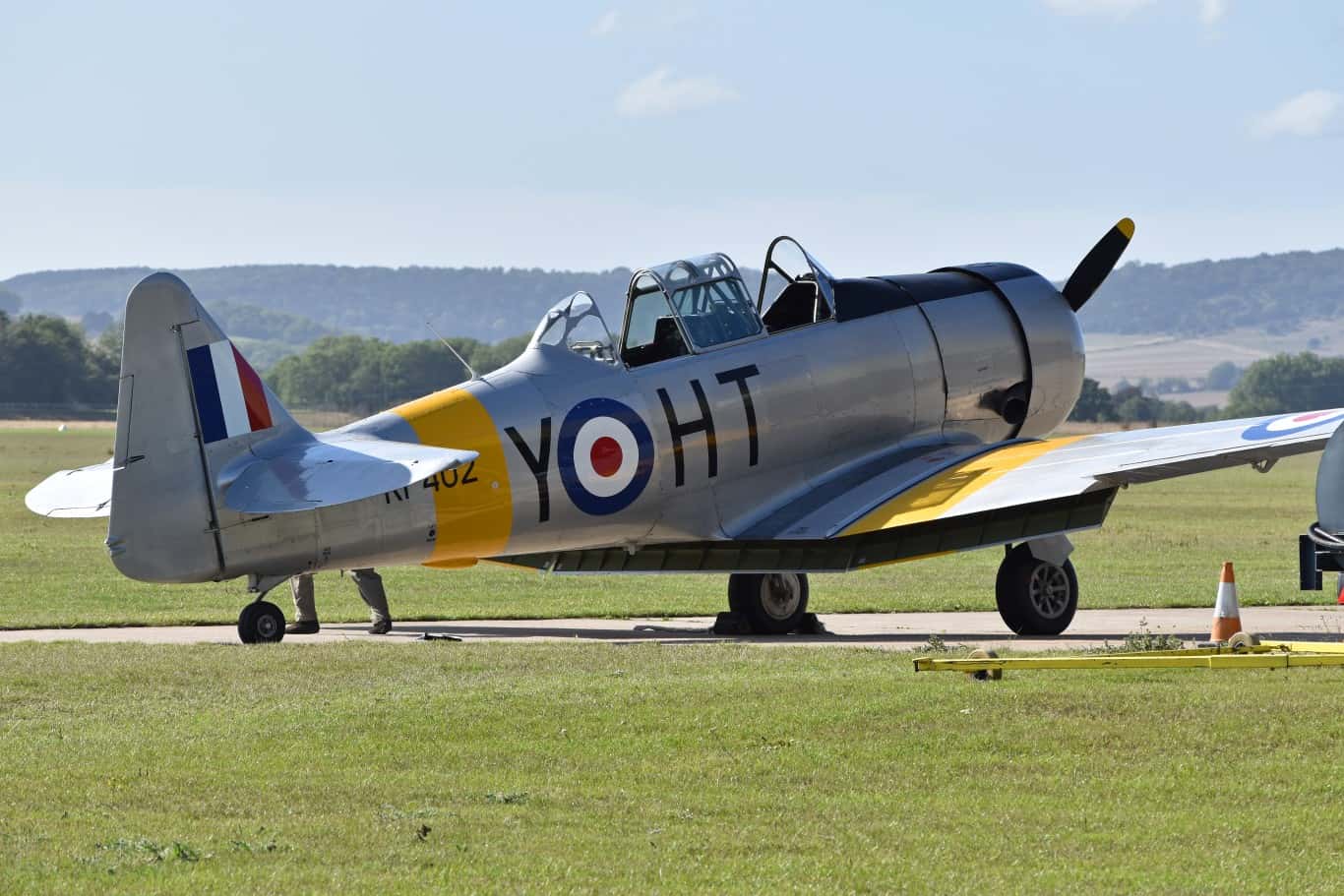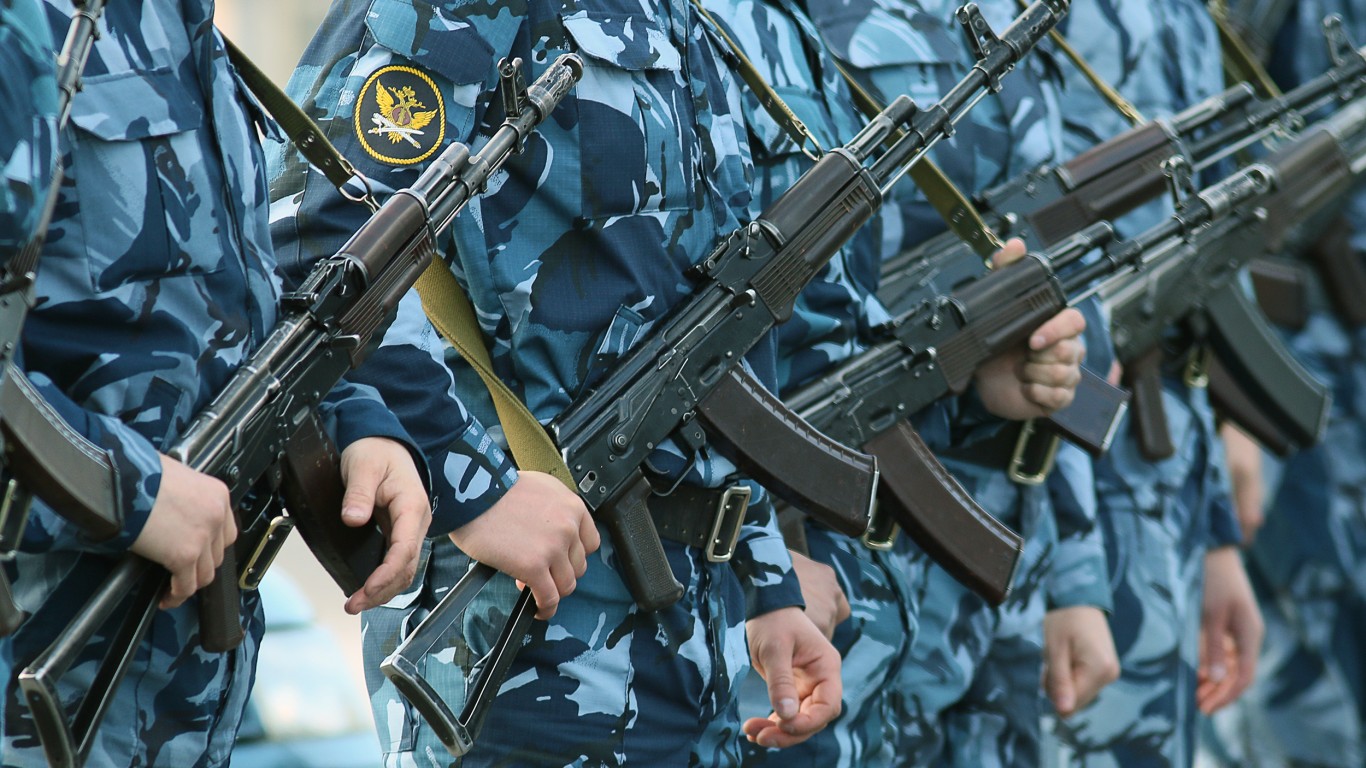
24/7 Wall St. Insights:
- The U.S. Army fields a wide array of aircraft that serve its operational needs
- The iconic AH-64 Apache, introduced in 1986, is the Army’s mainstay attack helicopter.
- The CH-47 Chinook is one of the most iconic helicopters due to its tandem-rotor design. These helicopters have been in service since the Vietnam War era
- Also: Dividend legends to hold forever
The U.S. Army fields an impressive array of aircraft, designed for everything from troop transport to reconnaissance and combat support. These aircraft typically serve in support of the Army’s ground forces, and generally act as the backbone of the Army’s operational and logistical capabilities. However, some aircraft make it into the fray and support troops on the frontline. (These are 40 gunship helicopters of the modern age.)
24/7 Wall St. is taking a closer look at the Army’s arsenal of aircraft. To identify every aircraft in the U.S. Army, 24/7 Wall St. reviewed the 2024 World Air Forces report from FlightGlobal, an aviation and aerospace industry publication. We ordered these aircraft alphabetically. We also included supplemental data on the type of aircraft, how many are in active service, armament, top speed, and year introduced.
The iconic AH-64 Apache, introduced in 1986, is the Army’s mainstay attack helicopter. Its firepower and versatility make it ideal for taking out enemy armor and supporting troops on the ground.
In terms of transport, the CH-47 Chinook is one of the most iconic helicopters due to its tandem-rotor design. These helicopters have been in service since the Vietnam War era and have found a distinct place in the U.S. Armed Forces. The Army’s lighter utility helicopters include the UH-72 Lakota and the Bell 407, to name a couple. (The helicopter war: a look at the helicopters that defined the Vietnam War.)
There are many more aircraft at the disposal of the U.S. Army whether fixed-wing or rotary.
Here is a closer look at the U.S. Army aircraft currently in service:
Why Are We Covering This?

Understanding the aircraft used by the U.S. Army provides insight into joint military capabilities and defense strategies. Also knowing what the U.S. has in its arsenal further explains its military capabilities. This further gives context to the tactical flexibility and logistical reach the Army brings in its operations. Lastly, the composition and technological level of the aircraft fleet highlight the Army’s ability of maintaining dominance and its rapid response capabilities, both of these are key factors in its strategic defense planning.
AH-64 Apache
- Type: Two-seat attack helicopter
- Year introduced: 1986
- Manufacturer: Boeing / McDonnell Douglas / Hughes
- Active in the Army: 824
- Aircraft on order: 15
- Top speed: 183 mph
- Armament: 30mm automatic cannon, Hellfire missiles, Hydra rocket pods, Stinger missiles, Sidewinder missiles, Sidearm missiles
The AH-64 Apache is a mainstay of the U.S. Army, with over 800 of these aircraft currently in service and 15 more on order. Introduced in 1986, this two-seat attack helicopter was designed by Boeing, McDonnell Douglas, and Hughes. With a top speed of 183 mph, it is outfitted for various assault missions. These come standard with a 30mm automatic cannon, and then can equip Hellfire missiles, and Hydra rocket pods, along with air-to-air ordnance like Stinger, Sidewinder, and Sidearm missiles.
AH/MH-6 Little Bird
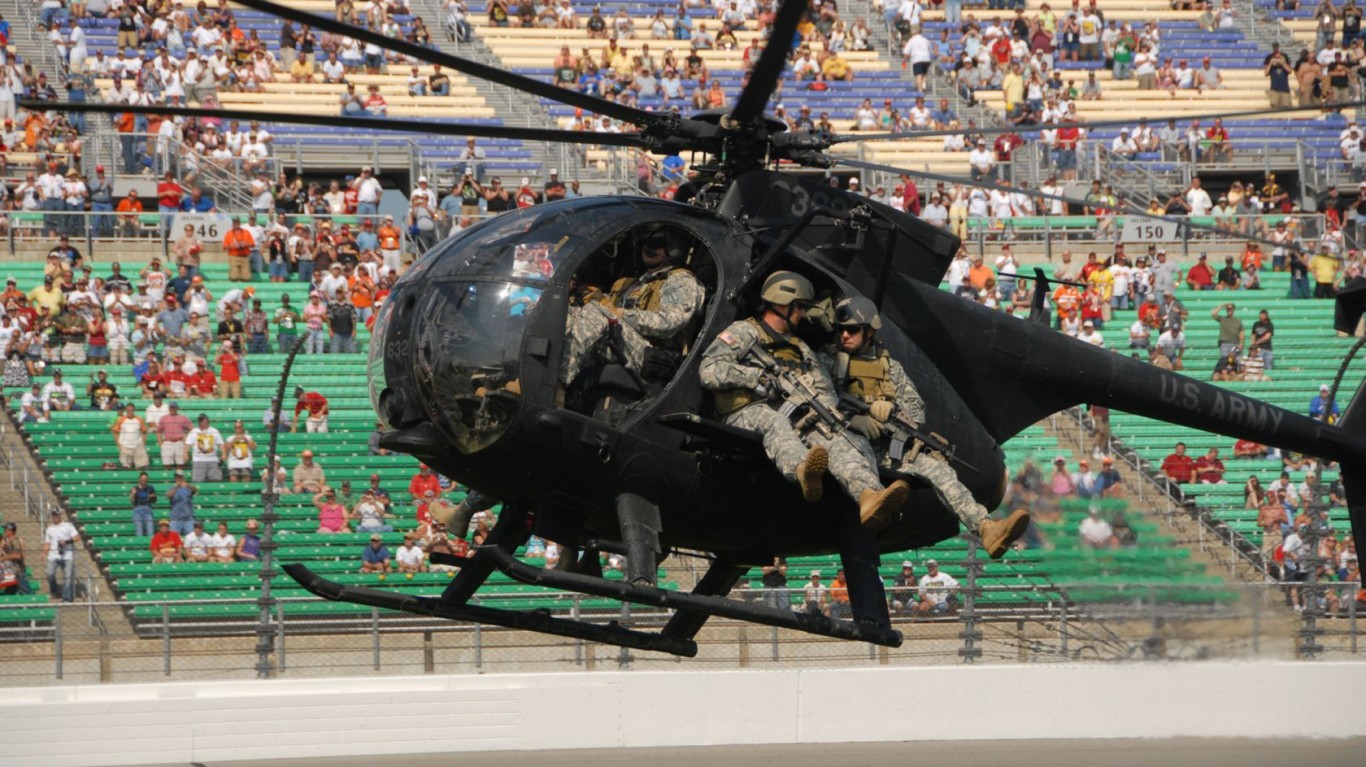
- Type: Light attack helicopter
- Year introduced: 1980
- Manufacturer: Hughes / McDonnell Douglas / Boeing
- Active in the Army: 47
- Aircraft on order: 74
- Top speed: 175 mph
- Armament: 30mm M230 chain gun, 12.7mm GAU-19 gatling guns, 7.62mm miniguns, M261 rocket pods, Hellfire missiles, TOW anti-tank missiles, Stinger missiles
The AH/MH-6 Little Bird is a light attack and reconnaissance helicopter that was introduced in 1980. It was originally designed by Hughes, then later McDonnell Douglas and Boeing. The Little Bird can hit speeds up to 175 mph. Although this helicopter is small, it packs a punch with its 30mm M230 chain guns, 12.7mm GAU-19 gatling guns, 7.62mm miniguns, and M261 rocket pods. It can also equip Hellfire missiles, TOW anti-tank missiles, and Stingers. Currently, the Army operates 47 Little Birds, with over 70 more units on order.
Beech C-12 Huron
- Type: Special mission aircraft
- Year introduced: 1974
- Manufacturer: Beechcraft
- Active in the Army: 3
- Aircraft on order: 0
- Top speed: 332 mph
- Armament: N/A
Introduced in 1974, the Beech C-12 Huron serves as a special mission aircraft within the U.S. Army, typically in roles that require rapid and flexible transportation solutions. The C-12 was designed by Beechcraft, and it can hit a top speed of 332 mph. Although these aircraft do not come standard with any armament, the real strength of the C-12 lies in its versatility and reliability in transport and reconnaissance missions. There are only three active units currently in service of the Army.
Bell 407
- Type: Light utility helicopter
- Year introduced: 1996
- Manufacturer: Bell Helicopter
- Active in the Army: 5
- Aircraft on order: 0
- Top speed: 162 mph
- Armament: N/A
The Bell 407, introduced in 1996, is a light utility helicopter. Since its introduction by Bell Helicopter, the 407 has been recognized for its reliability and performance, in logistical and transport operations within the Army. These helicopters can hit a top speed of 162 mph and do not come with any standard armaments. Again, the Bell 407 usually plays various support roles.
C-26 Metroliner

- Type: Transport aircraft
- Year introduced: 1980
- Manufacturer: Fairchild Aircraft
- Active in the Army: 13
- Aircraft on order: 0
- Top speed: 331 mph
- Armament: N/A
The C-26 Metroliner has been a staple in the U.S. Army’s fleet since its introduction in 1980 by Fairchild Aircraft. It was designed primarily for cargo and personnel transport, and the Metroliner can reach speeds up to 331 mph. There are currently 13 active aircraft in service. Outside of the military, the C-26 is used worldwide in civilian sectors for regional airline and freight operations.
C-27 Spartan
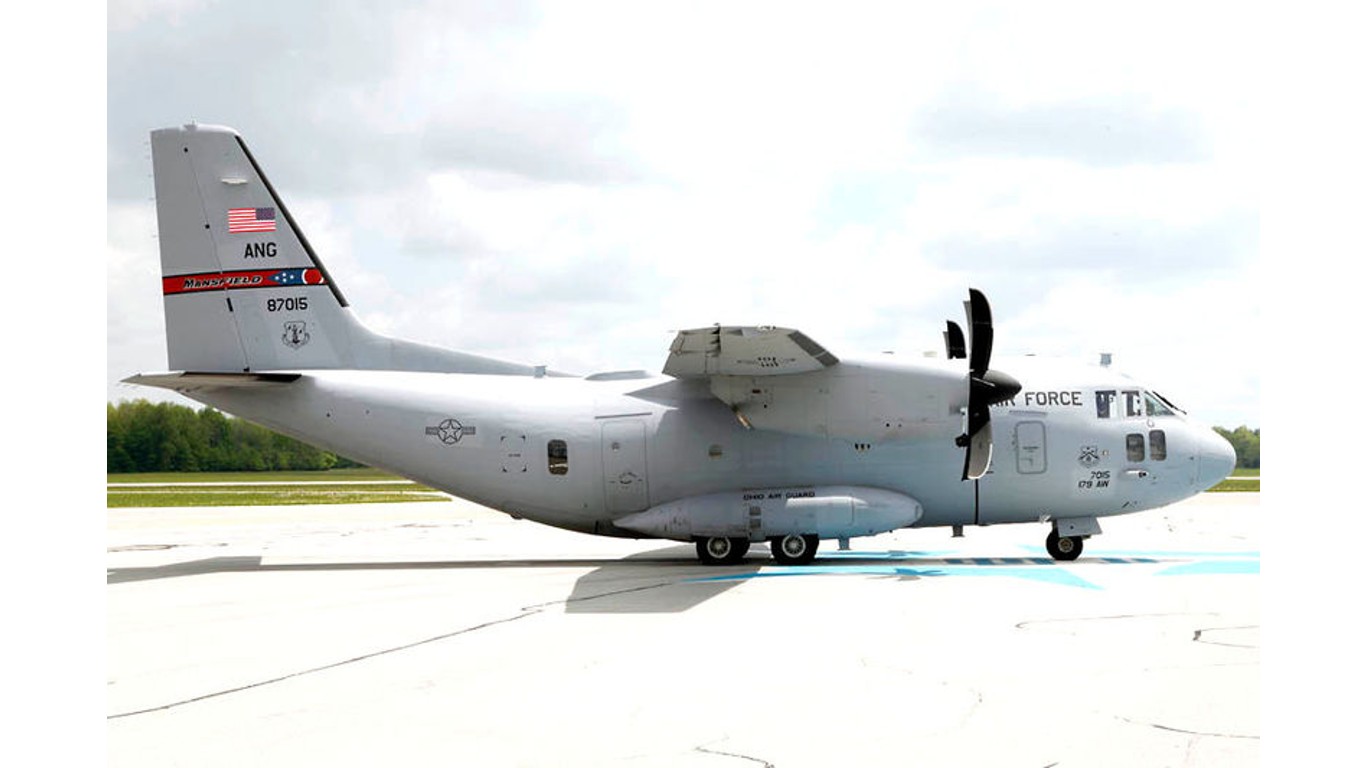
- Type: Medium-lift tactical transport aircraft
- Year introduced: 1997
- Manufacturer: Leonardo-Finmeccanica / Boeing
- Active in the Army: 7
- Aircraft on order: 0
- Top speed: 373 mph
- Armament: N/A
The C-27 Spartan is a medium-lift tactical transport aircraft, introduced in 1997. These aircraft are designed to transport troops, equipment, and supplies worldwide. Designed by Leonardo-Finmeccanica and Boeing, the Spartan has proven a valuable asset for its ability to operate from tough runways, typically servicing forward operating bases and remote areas. The Spartan has a top speed of 373 mph, and there are only 7 of these aircraft in active service. Also, these aircraft do not carry any armament.
Cessna 208 Caravan
- Type: Turboprop utility aircraft
- Year introduced: 1984
- Manufacturer: Cessna Aircraft / Textron Aviation
- Active in the Army: 1
- Aircraft on order: 0
- Top speed: 214 mph
- Armament: N/A
The Cessna 208 Caravan, a turboprop utility aircraft, fills a unique role in the U.S. Army, primarily serving small scale specialized tasks. The Caravan was introduced in 1984, designed by Cessna Aircraft, now Textron Aviation. The Caravan boasts a top speed of 214 mph and typically deals in cargo, troop transport, and even surveillance. There is only one active aircraft in the U.S. Army.
CH-47 Chinook
- Type: Medium-lift, tandem rotor transport helicopter
- Year introduced: 1962
- Manufacturer: Boeing
- Active in the Army: 510
- Aircraft on order: 57
- Top speed: 180 mph
- Armament: 7.62mm machine guns
The CH-47 Chinook is one of the most iconic aircraft in the U.S. Army, known for its distinctive tandem rotor design. Introduced in 1962 by Boeing, the Chinook has evolved into a highly capable medium-lift platform over the decades. Although these helicopters can only hit a top speed of 180 mph, the Army uses these extensively with over 500 of these helicopters actively serving and another 57 on order. The Chinook has been extensively used in numerous conflicts, including the Vietnam War, the wars in Iraq and Afghanistan, and humanitarian missions worldwide.
Challenger 604/650
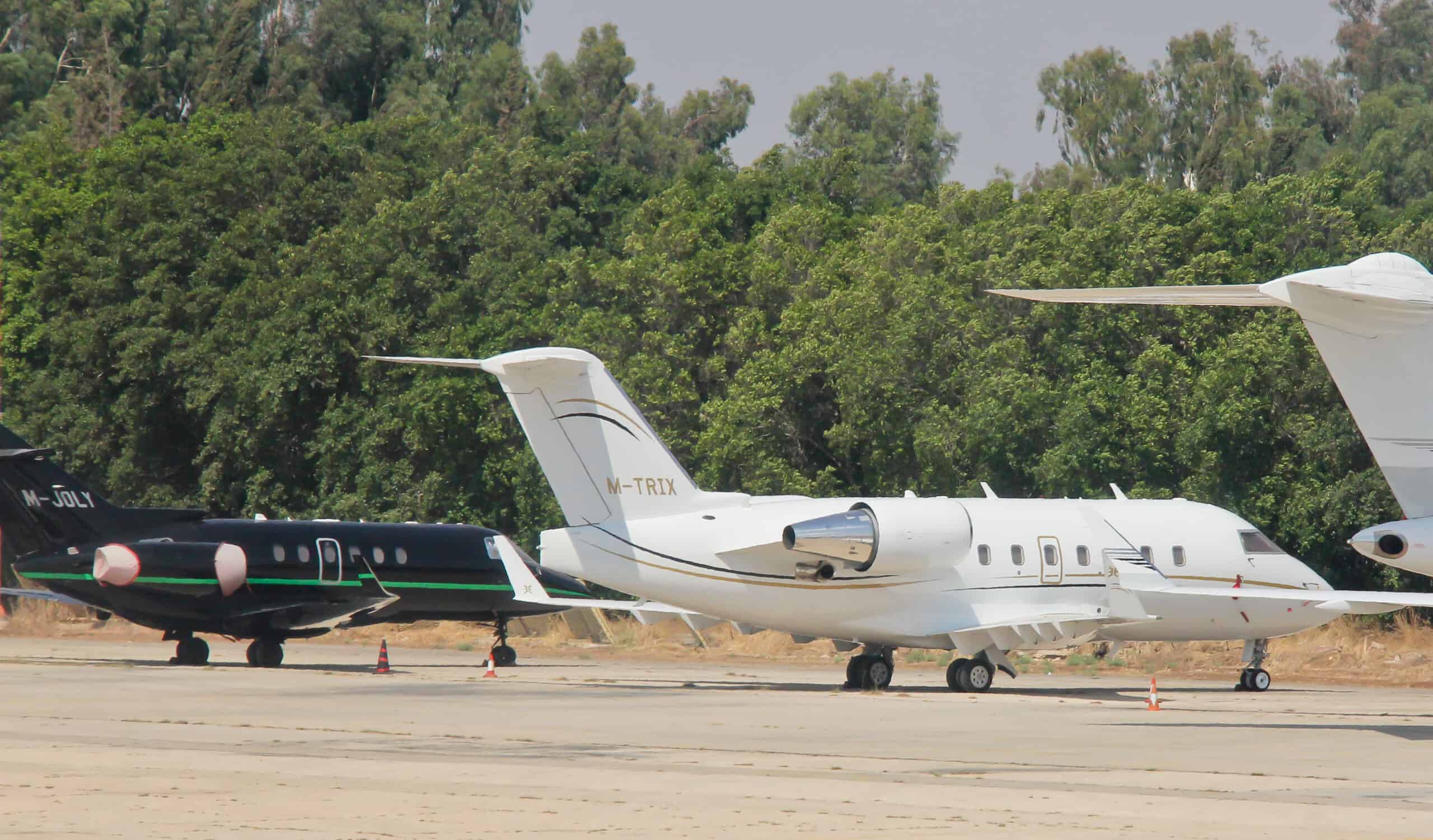
- Type: Transport aircraft
- Year introduced: 1980
- Manufacturer: Bombardier Aerospace
- Active in the Army: 3
- Aircraft on order: 0
- Top speed: 565 mph
- Armament: N/A
Introduced in 1980 by Bombardier Aerospace, the Challenger 604/650 serves as a high-performance transport aircraft within the U.S. Army. This model offers an impressive top speed of 565 mph, making it one of the fastest aircraft in the Army’s fleet. Primarily used for VIP transport and high-priority missions, the Challenger 604/650 only has three active units in service–emphasizing its exclusive role. The Challenger’s long-range capabilities allow it to complete transcontinental missions without refueling, making it an ideal asset for deploying high-ranking personnel across vast distances.
Citation Encore/Ultra
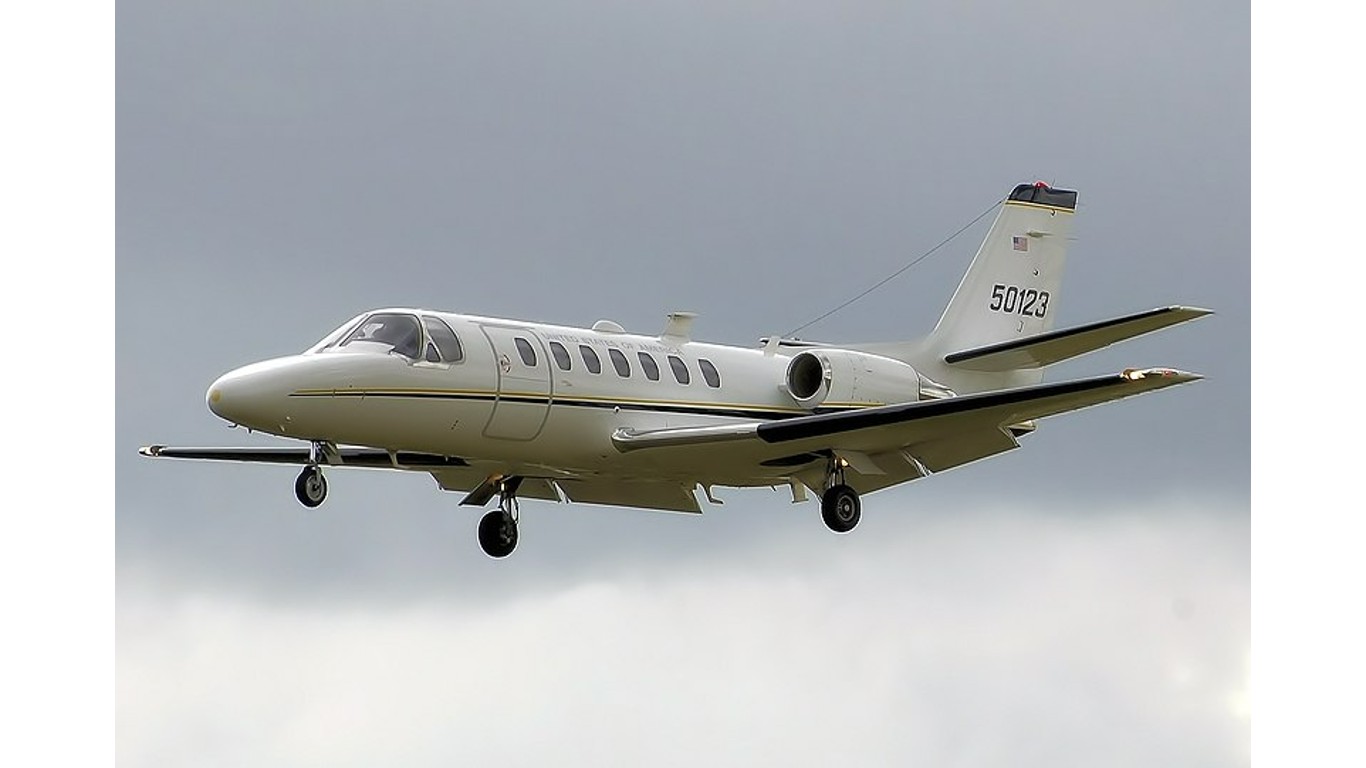
- Type: Transport aircraft
- Year introduced: 2004
- Manufacturer: Cessna Aircraft
- Active in the Army: 28
- Aircraft on order: 0
- Top speed: 490 mph
- Armament: N/A
The Citation Encore/Ultra, introduced in 2004, is a transport aircraft in the U.S. Army, serving in transport operations. Cessna Aircraft designed this model to find a balance between performance and utility, with a top speed of 490 mph. There are currently 28 active aircraft in service. The Encore/Ultra primarily functions as a quick transport for personnel and light cargo. These aircraft come unarmed. Besides military applications, this aircraft is used in the civilian sector for anything from corporate travel to air ambulance services.
Dash 8

- Type: Transport aircraft
- Year introduced: 1984
- Manufacturer: de Havilland / Bombardier Aerospace
- Active in the Army: 9
- Aircraft on order: 0
- Top speed: 317 mph
- Armament: N/A
Introduced in 1984, the Dash 8 stands as a key transport aircraft in the Army. Designed by de Havilland, later taken over by Bombardier Aerospace, the Dash 8 can hit a top speed of 317 mph. With 9 active units, it primarily serves in logistic support, personnel transport, and specialized missions such as surveillance and reconnaissance, thanks to its ability to be fitted with advanced sensors. These aircraft are capable of operating from shorter runways, which allows the Army to use the Dash 8 in more remote or confined locations where larger transport aircraft can’t go.
DC-3 (C-41A)
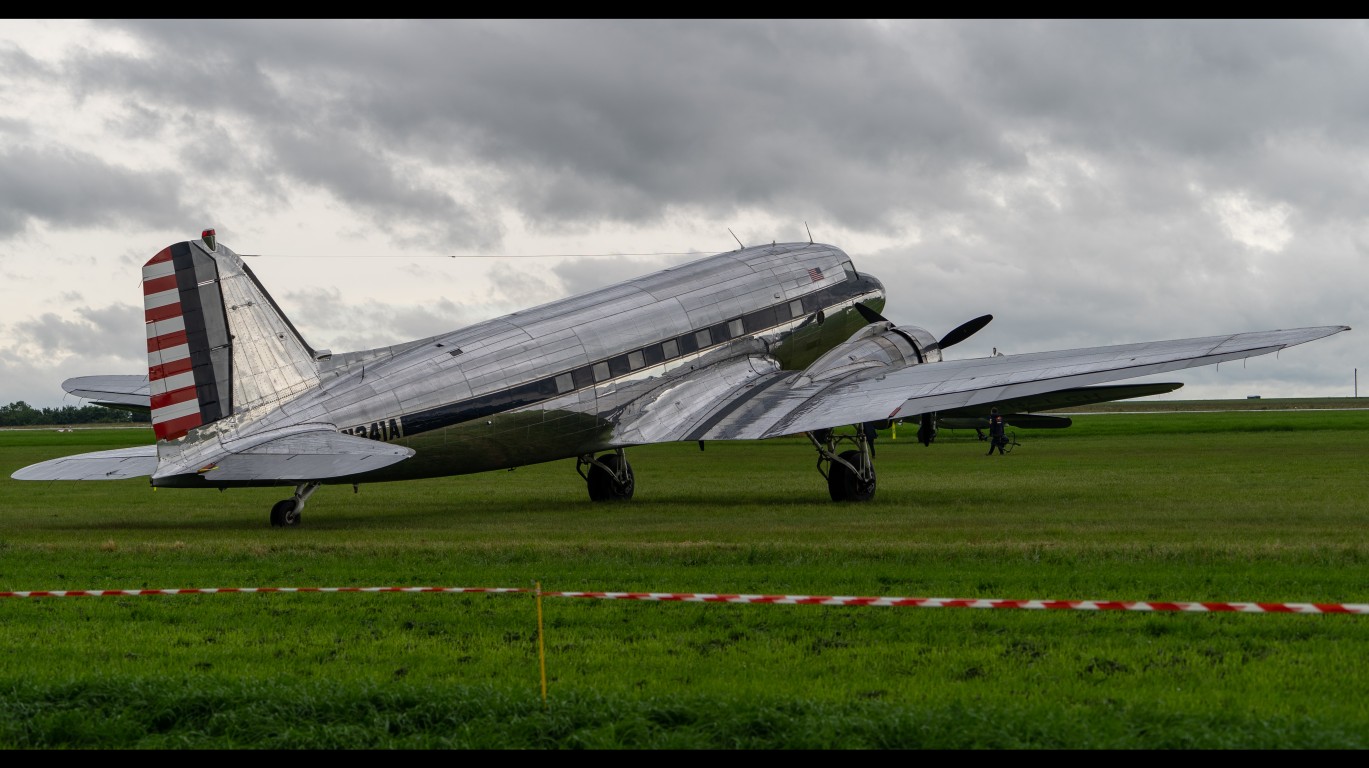
- Type: Transport aircraft
- Year introduced: 1936
- Manufacturer: Douglas Aircraft
- Active in the Army: 5
- Aircraft on order: 0
- Top speed: 237 mph
- Armament: N/A
The DC-3, known in military circles as the C-41A, is one of the oldest transport aircraft in the Army. Introduced by Douglas Aircraft in 1936, this aircraft has a top speed of 237 mph. The C-41A has undergone upgrades and improvements since its introduction nearly a century ago, but there are only five active aircraft currently in the U.S. Army. This aircraft typically serves for troop transport and cargo hauling. Despite its age, it continues to be a reliable asset for various logistical tasks within the Army.
DHC-7 Dash 7 (EO-5C)
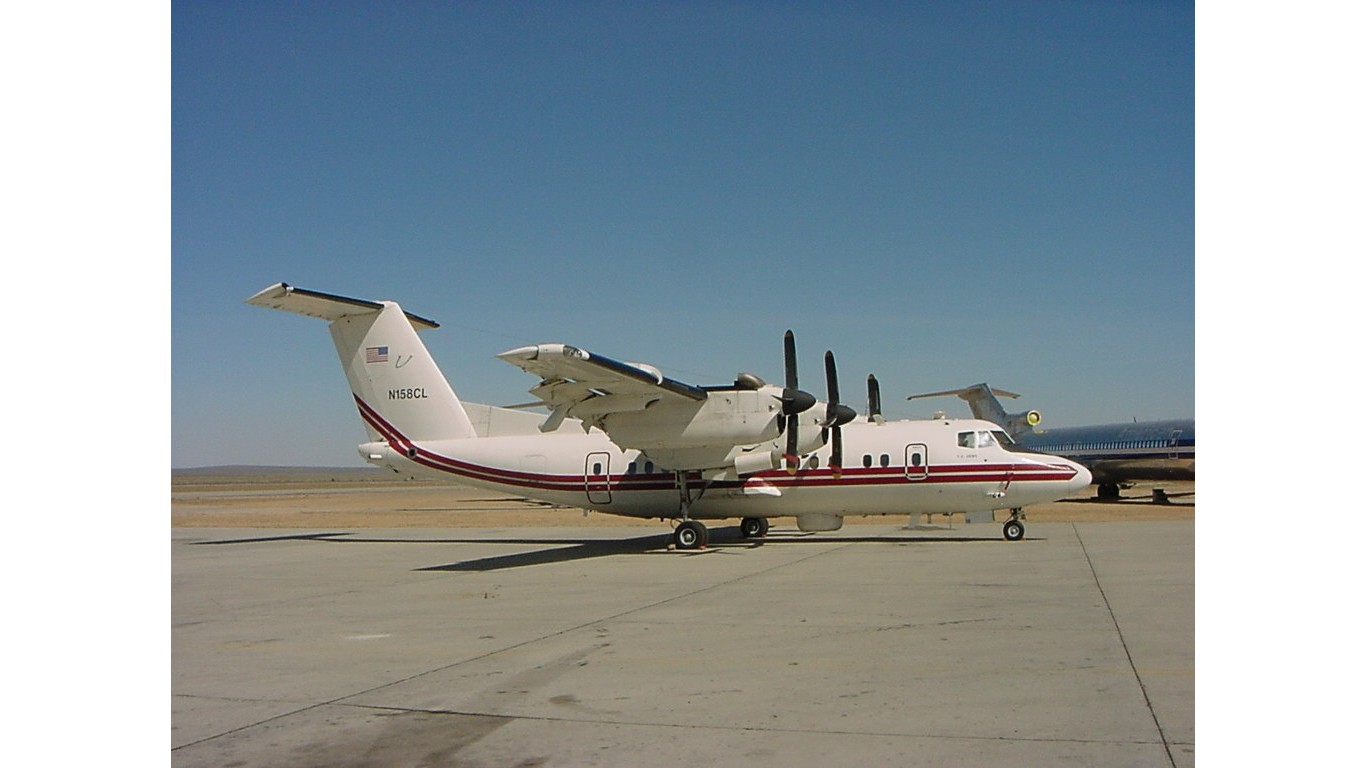
- Type: Transport aircraft
- Year introduced: 1978
- Manufacturer: de Havilland
- Active in the Army: 3
- Aircraft on order: 0
- Top speed: 317 mph
- Armament: N/A
The DHC-7 Dash 7 is a specialized transport aircraft renowned for its short takeoff and landing (STOL) capabilities. Introduced in 1978 by de Havilland, this aircraft serves the U.S. Army with three active units. With a top speed of 317 mph and lacking armament, the Dash 7 is primarily used for intelligence, surveillance, and reconnaissance missions.
Grob G120

- Type: Trainer aircraft
- Year introduced: 1999
- Manufacturer: Grob Aircraft
- Active in the Army: 6
- Aircraft on order: 0
- Top speed: 199 mph
- Armament: N/A
The Grob G120, a trainer aircraft, has been part of the U.S. Army’s training program since its introduction in 1999. This aircraft is specifically designed for training purposes, with a top speed of 199 mph. Despite its non-combat role and lack of armament, the G120’s performance and reliability make it a key component of military pilot training programs. Currently there are 6 active aircraft in service.
Gulfstream C-20H
- Type: Transport aircraft
- Year introduced: 1983
- Manufacturer: Gulfstream Aerospace
- Active in the Army: 1
- Aircraft on order: 0
- Top speed: 582 mph
- Armament: N/A
The Gulfstream C-20H is a variant within the Gulfstream series that typically serves as a high-speed transport aircraft, primarily for VIP and high-priority missions. Introduced in 1983 by Gulfstream Aerospace, this aircraft has a top speed of 582 mph, making it one of the fastest in the Army’s fleet. Although it carries no armament, the C-20H’s speed and range are its main assets, facilitating transport for government officials and top military brass. There is only one active unit in service.
H125 Fennec

- Type: Light utility helicopter
- Year introduced: 1990
- Manufacturer: Eurocopter / Airbus Helicopters
- Active in the Army: 1
- Aircraft on order: 0
- Top speed: 152 mph
- Armament: 20mm GIAT automatic cannon, 12.7mm machine gun pods, 7.62mm machine gun pods, FZ220 rocket pods, BMD-71 TOW missiles
Introduced in 1990, the H125 Fennec is a versatile light utility helicopter that can equip serious armament, if needed. Designed by Eurocopter, now known as Airbus Helicopters, the Fennec can hit a top speed of 152 mph. Despite its classification as a light utility helicopter, it can be armed with a wide array of weaponry. These helicopters can equip a 20mm GIAT automatic cannon, machine gun pods in 12.7mm and 7.62mm calibers, FZ220 rocket pods, and BMD-71 TOW missiles, making it well-suited for a range of missions from close air support to convoy escort. There is only one active helicopter currently in service.
Mi-8/17 Hip
- Type: Medium-lift transport / gunship helicopter
- Year introduced: 1977
- Manufacturer: Mil Moscow Helicopter Plant
- Active in the Army: 10
- Aircraft on order: 0
- Top speed: 158 mph
- Armament: 23mm cannon pods, 7.62mm machine guns, rockets, anti-tank missiles
Although the Mi-8/17 Hip originates from the Soviet Union, there are currently 10 in service of the U.S. Army. The Mi-8/17 is medium-lift helicopter that serves roles as both a transport and a gunship. These helicopters were originally designed at the Mil Moscow Helicopter Plant in 1977. The Hip can hit a top speed of 158 mph and is equipped with a wide array of weapons including 23mm cannon pods, 7.62mm machine guns, rockets, and anti-tank missiles.
Mil Mi-24 Hind

- Type: Attack helicopter
- Year introduced: 1973
- Manufacturer: Mil Moscow Helicopter Plant
- Active in the Army: 1
- Aircraft on order: 0
- Top speed: 208 mph
- Armament: 12.7mm heavy machine guns, 23mm cannon, 30mm cannon, anti-tank missiles, rocket pods, machine gun pods, cannon pods, conventional drop bombs
The Mil Mi-24 Hind is another Soviet-era helicopter in service of the U.S. Army, but there is only one currently active. These are iconic attack helicopters that were introduced in 1973, designed at the Mil Moscow Helicopter Plant. With a top speed of 208 mph, the Hind comes equipped with a wide range of weaponry including 12.7mm heavy machine guns, 23mm and 30mm cannons, anti-tank missiles, rocket pods, machine gun pods, cannon pods, and even conventional drop bombs.
S-70 Black Hawk
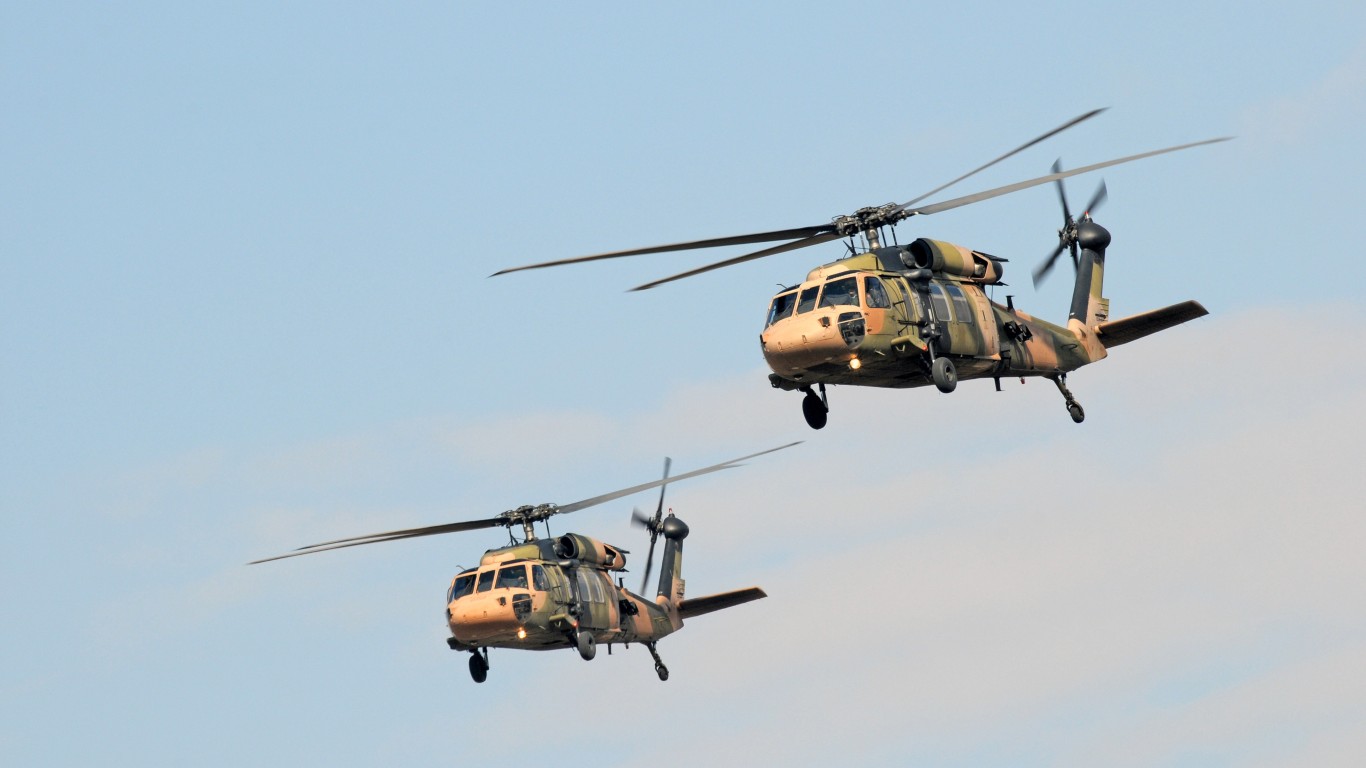
- Type: Medium-lift multi-mission helicopter
- Year introduced: 1979
- Manufacturer: Sikorsky
- Active in the Army: 2,299
- Aircraft on order: 361
- Top speed: 183 mph
- Armament: 7.62mm machine guns, Hellfire missiles, 12.7mm gatling guns, M134 gatling guns, rocket pods, 30mm chain gun
Introduced in 1979, the Black Hawk is by far one of the most iconic helicopters ever built. It is the workhorse of the U.S. military with over a few thousand units currently in service across all branches.
The Black Hawk features twin turboshaft engines, a single four-bladed main rotor, and a four-bladed tail rotor, which allow for top speeds over 180 mph. Typically, this helicopter carries a crew of two pilots and two crew chiefs and can transport up to 11 fully equipped soldiers. In total, the Black Hawk can carry a payload of roughly 9,000 pounds.
Black Hawk helicopters have played important roles in conflicts around the globe. One infamous instance was the conflict in Somalia in 1993, particularly the Battle of Mogadishu. The Black Hawk played a significant role in urban combat and casualty evacuation under intense fire. This story would go on to make it as a blockbuster movie famously titled “Black Hawk Down.”
Super King Air
- Type: Transport aircraft
- Year introduced: 1972
- Manufacturer: Beechcraft
- Active in the Army: 179
- Aircraft on order: 0
- Top speed: 348 mph
- Armament: N/A
Introduced in 1972, the Super King Air is a mainstay of transport aircraft in the U.S. Army. It was originally designed by Beechcraft, and there are nearly 180 of these aircraft currently in service. With a top speed of 348 mph, these aircraft can be used for a number of roles including cargo transport and personnel movement to surveillance and reconnaissance missions.
T-6D Texan
- Type: Trainer aircraft
- Year introduced: 1936
- Manufacturer: North American Aviation
- Active in the Army: 4
- Aircraft on order: 0
- Top speed: 209 mph
- Armament: 7.62mm machine guns
The T-6D Texan is one of the oldest aircraft currently in service of the U.S. Army. Introduced in 1936 by North American Aviation, and originally serving as a fighter aircraft, the T-6D has been repurposed as a trainer aircraft. The Texan can hit top speeds over 200 mph and can be equipped with small arms like 7.62mm machine guns. There are currently only four of these aircraft in active service.
UH-72 Lakota
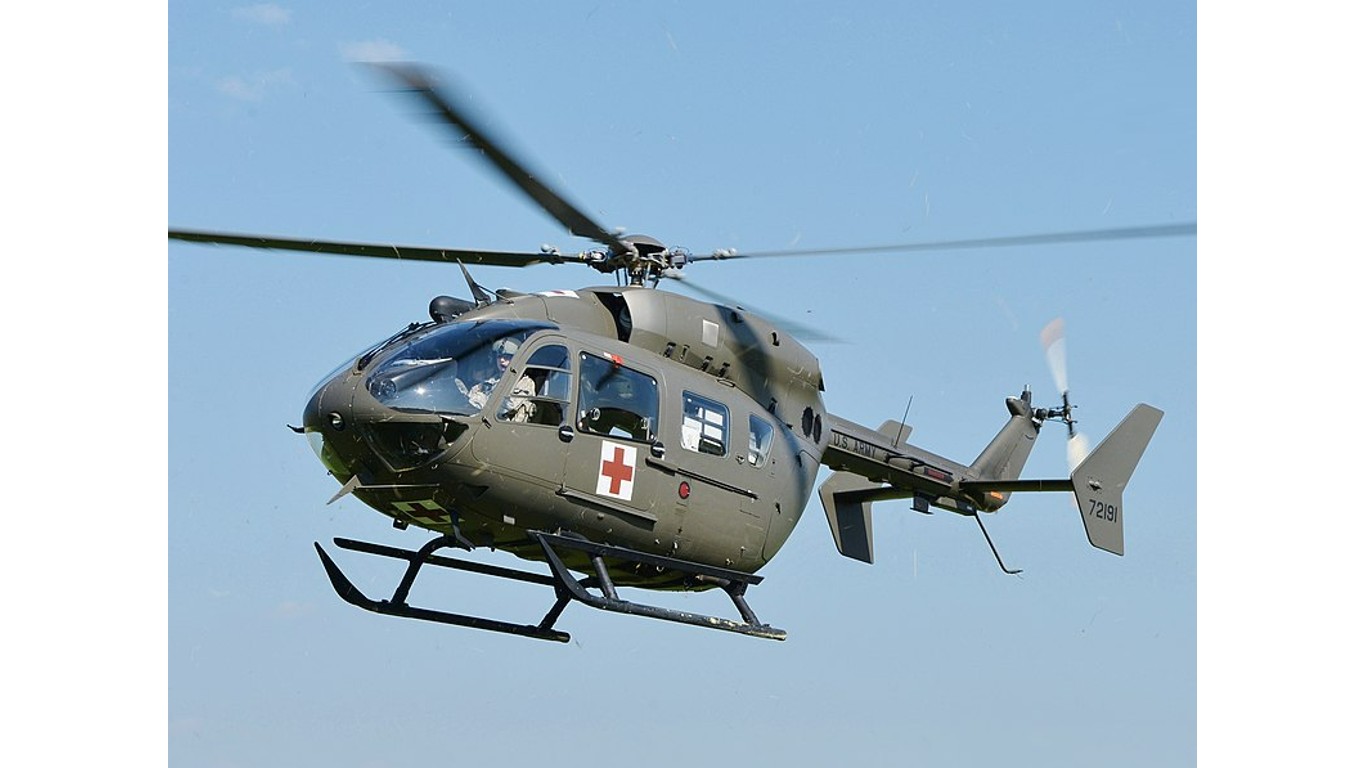
- Type: Light utility helicopter
- Year introduced: 2007
- Manufacturer: Eurocopter / Airbus Helicopters
- Active in the Army: 478
- Aircraft on order: 30
- Top speed: 167 mph
- Armament: N/A
Introduced in 2007, the UH-72 Lakota is a modern light utility helicopter that serves primarily in non-combat missions. These helicopters are used extensively by the Army with over 470 currently in active service. The Lakota typically serves in transport, medical evacuation, and reconnaissance roles. These helicopters were originally designed by Eurocopter, now Airbus Helicopters, and they have a top speed of 167 mph.
Take Charge of Your Retirement In Just A Few Minutes (Sponsor)
Retirement planning doesn’t have to feel overwhelming. The key is finding expert guidance—and SmartAsset’s simple quiz makes it easier than ever for you to connect with a vetted financial advisor.
Here’s how it works:
- Answer a Few Simple Questions. Tell us a bit about your goals and preferences—it only takes a few minutes!
- Get Matched with Vetted Advisors Our smart tool matches you with up to three pre-screened, vetted advisors who serve your area and are held to a fiduciary standard to act in your best interests. Click here to begin
- Choose Your Fit Review their profiles, schedule an introductory call (or meet in person), and select the advisor who feel is right for you.
Why wait? Start building the retirement you’ve always dreamed of. Click here to get started today!
Thank you for reading! Have some feedback for us?
Contact the 24/7 Wall St. editorial team.
